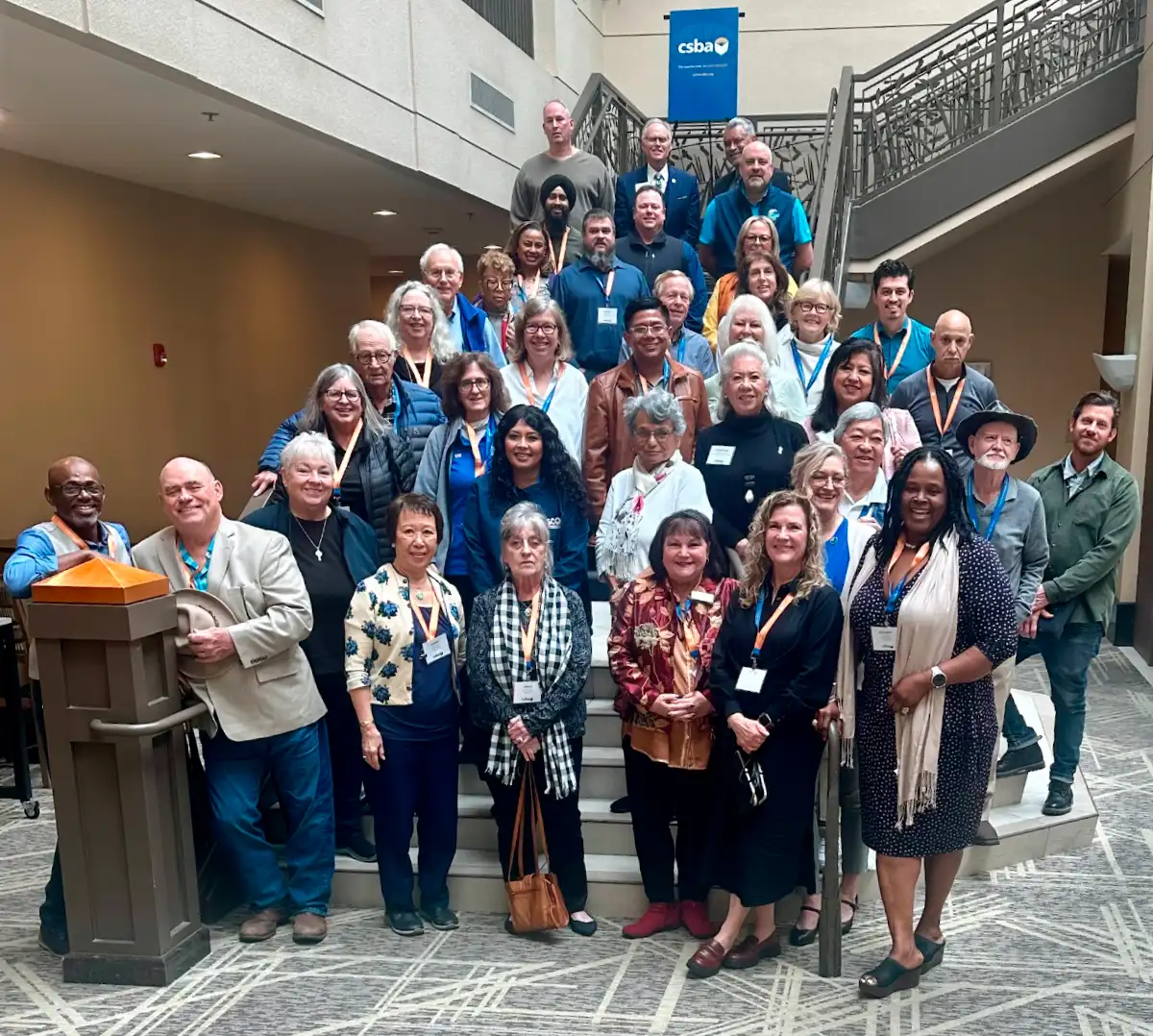
County board members from across California came together in Sacramento on March 8-9 for the CSBA County Board Workshop. Among other responsibilities, county boards provide services to the state’s most vulnerable populations through juvenile court and county community schools, support county office initiatives, and make decisions regarding charter school authorizations and renewals — all governance duties requiring specific support to execute effectively.
The sessions — all designed by county board members — included a focus on the shared governance structure in county offices of education, mastering boardroom diplomacy, the ins and outs of expulsion appeals, charter school renewals, understanding the county budget and promising practices in juvenile court and community schools. Additionally, County Transitional Working Group members John McPherson of Monterey COE and Mike Walsh of Butte COE gave a presentation on why the decision was made to integrate the functions and services of the California County Boards of Education (CCBE) and incorporate county members fully into CSBA. The presentation also detailed how CSBA will expand county board member services, using the Transitional Working Group as a sounding board and idea factory to refine the most high-leverage strategies and to provide recommendations to CSBA’s Board of Directors.
“The County Board Member Workshop allowed members to engage with subject matter experts and their own colleagues to brainstorm solutions to difficult problems, identify opportunities to strengthen county board governance and map strategies for student success,” said CSBA President Albert Gonzalez. “The Transitional Working Group produced a solid program developed for county members, by county members, and offered a glimpse of what we can expect from increased collaboration as we continue to integrate CCBE into CSBA. We don’t expect a seamless transition, but I can promise the work will continue to be thoughtful and intentional, and include even greater feedback from county board members, which will be considered in CSBA’s expansion of services geared toward county trustees. The goal is to provide a more cohesive and aligned structure that better supports county boards and the students they serve.”
Presenters emphasized the different structures of district and county boards, especially the consideration that most county superintendents are elected. Therefore, county boards are not the boss of the superintendent, as is the case on district boards.
“In order to jointly lead the county office of education successfully, both county boards and county superintendents should pursue the concept of shared governance characterized by shared authority, accountability and responsibility, and to the extent possible, an aligned vision,” according to The Trustee Handbook: A Guide to Shared Governance for County Boards of Education. “Only through a collaborative and shared governance process can both entities govern together effectively and seamlessly for the benefit of the students and families of the county.”
Presenters referred to information in the handbook, created in 2022 with the input of county superintendents, education law experts including CSBA’s Legal Department, and experienced county board members. The handbook covers the origins of the county board, its roles and responsibilities, collaboration with the superintendent, special sections on law and governance, case studies, resources and tools.

To accomplish this work, a yearlong Transitional Working Group has been formed to hammer out the details. County members will continue to be represented on CSBA’s Delegate Assembly through the formation of a new statewide region, Region 14, consisting of the county board member Delegates. This region will launch after the Delegate Assembly votes to amend the bylaws in May. In addition, counties are represented by the Director-at-Large, County Michael Teasdale and, in 2024, a temporary non-voting county board position, filled by McPherson to ensure continuity of county board member representation. Additionally, county trustees should be aware who their Regional Director is and develop a relationship with them, McPherson said.
Walsh then led a working session where trustees provided input on remaining issues that county members and CSBA can solve together, and on the critical areas where county board members need support from CSBA. CSBA staff and members of the Transitional Working Group will review the outcomes of this session and incorporate feedback the recommendations that will be taken to the CSBA Board of Directors in December.
Shasta COE, Region 2
Solano COE, Region 3
Sutter COE, Region 4
Butte COE, Region 4
San Mateo COE, Region 5
Sacramento COE, Region 6
Yolo COE, Region 6
Alameda COE, Region 7
Tuolumne, COE, Region 8
Monterey COE, Region 9
Fresno COE, Region 10
County, Ventura COE, Region 11
Ventura COE, Region 11
Los Angeles COE, Region 21-24